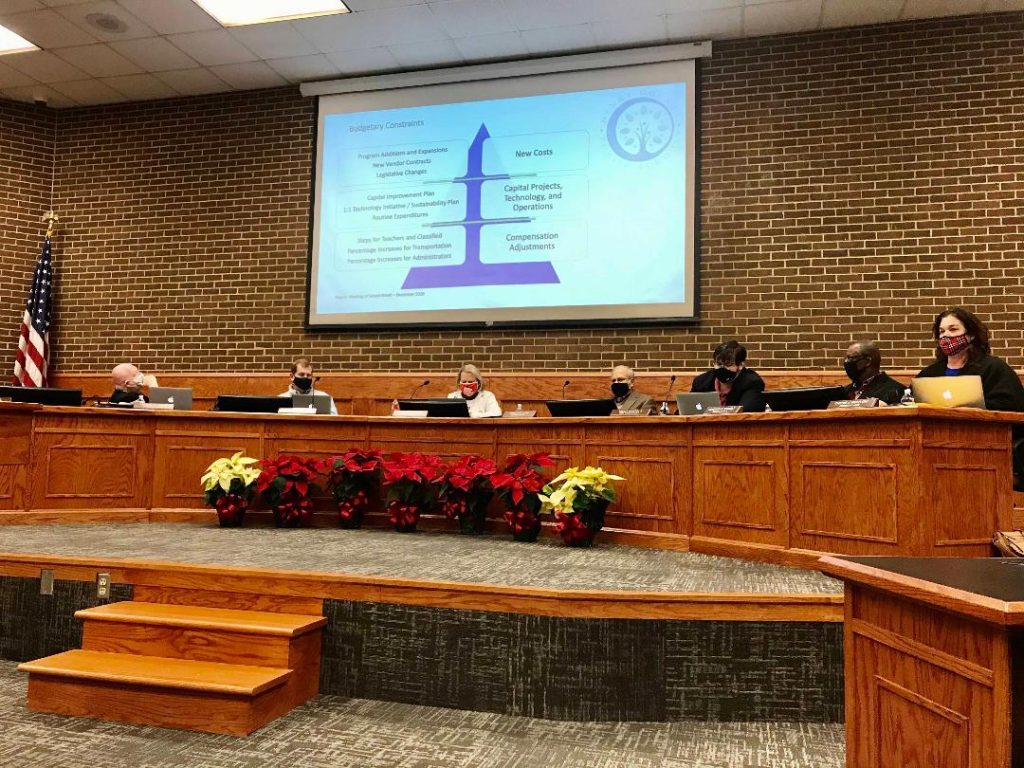
By Brandon Martin
In their final meeting of the calendar year, the Henry County School Board addressed several items relevant to future operations in the division at a recent meeting.
Schools are currently slated to return to a hybrid format on Jan. 19, 2021.
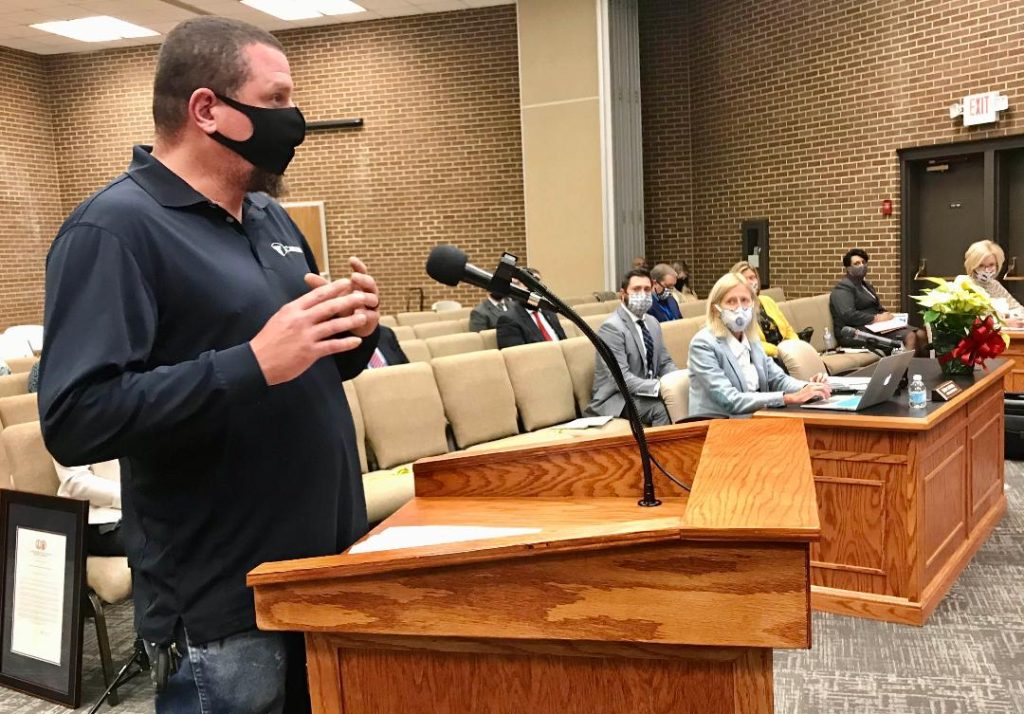
Instruction
Ron James, a parent from Ridgeway, outlined concerns with the gap in instruction time that students in Henry County will have due to the number of days spent on virtual instruction.
“After calling 12 school districts in Virginia and 23 different states, I found out that some states are teaching their students on a weekly basis of 1,951 minutes a week, he said. “Our neighboring county, Pittsylvania County, is teaching their kids at 960 minutes a week. We are at 240 minutes a week. This is not enough. I’m watching my kid struggle.”
While he said he recognizes the gravity of the situation, James urged the board to act.
“This is not impossible. Other counties are doing it. Other states are doing it and our kids are getting left behind,” James said. “Teachers are pushing, and I understand that they are pushing. We just have to push a little harder.”
Board Member Ben Gravely, of the Iriswood District, asked if administrators have “any type of recovery plan” planned to address shortfalls in education for students.
Schools Superintendent Sandy Strayer said that the division has many assessments to gauge learning gaps for students.
“Currently, we are administering the SOLs (Standards of Learning) because, as you know, it’s very important to have as many students take the SOL as soon as they complete the coursework,” Strayer said. “We have a high pass rate.”
Students taking a recent reading SOL at Bassett High School “all qualified so they will be able to graduate,” she said.
In addition to the statewide tests, Strayer said the schools also have their own performance evaluations.
“Even without COVID, we have deficiencies where we have to look at those assessments, evaluate student performance and then we have to have a plan,” Strayer added. “We may possibly have an extended summer school. We always have a summer school. Many times, we don’t have students take us up on that because they feel that they have been in school all year and sometimes, it’s not a fit for every kid.”
The real assessment of learning gaps will come once students return to school in-person on Jan. 19, according to Strayer.
Cherie Whitlow, at-large board member, noted that with the second semester of last school year being cut short, combined with the first semester of this year, students will have missed almost a year of instruction.
“Where are we going to make up all of those months of instruction that they have not received,” Whitlow asked.
Lisa Millner, assistant superintendent of teaching and learning, said that administrators have been planning throughout the year to address the issue.
“We are looking at how things could look different for next year, even possible transition classes,” Millner said of elementary-age students. “Some students are going to move right along, and they are going to be on track to go into the next grade level. Some students are not, and they are going to be stuck in between those two grade levels.”
In addition to “recovery” courses in the summer, Millner said the division is planning on starting “as early as next semester” for middle and high school students.
“We’ve also set aside CARES (Coronavirus Aid, Relief, and Economic Security) funding to provide opportunities that we may not have been able to provide before,” Millner said.
Strayer said more teachers are needed to meet the recovery needs.
“We always have to survey teachers and have them apply for summer school, but we feel like we are going to have way more students,” Strayer said. “Summer school is past their contract and they get additional pay. We need to see how many teachers we are going to have available for summer school.”
Athletics
David Scott, assistant superintendent of Operations and Administrative Services, discussed how winter sports will look under pandemic conditions.
“The school divisions in Region 6 are all in accord in saying that we are going to look at the same metrics when deciding whether or not we can play games,” Scott said. “The outlook on that right now is bleak. That’s something that we want to continue to check because we don’t want to cancel a whole season at this point. We have our fingers crossed that things will start to improve.”
Winter sports began in the region on Dec. 7 with coaches allowed to pick teams and distribute apparel, but “we are still going to follow those Phase II guidelines,” Scott said.
He added that the level of contact is to remain the same as during conditioning, “so it should not be 5-on-5 scrimmages right now. Or anything remotely close to that.”
At most, Scott said that teams will only be playing approximately 60 percent of a normal season.
“We’ve said that we want to continue to have those teams on the schedule. If they get canceled, then so be it, but we also want to guarantee that their (coaches) pay will not be below 60 percent,” Scott said. “Hopefully, if things improve and we start to have more contests then we can discuss the other 40 percent.”
Strayer noted that some may question why students would be allowed to participate in sports but not in-person instruction.
“Academics are always first but again, we stopped our in-person learning because of a lack of substitutes,” she said. “Our coaches and our students are willing to come.”
New guidelines from the state limit 25 spectators for indoor sports. Coaches, players, and referees do not count towards the number, but cheerleaders and parents do. For outside sports, players can bring two guests. All spectators will be required to wear face coverings during the event.
Budget
Scott said he expects the total revenue to be around $87 million for fiscal year 2022.
The expenditures are largely problems that the division has struggled with for years, he said and explained that budgetary constraints down into three main areas: compensation adjustments, capital projects and new costs.
Scott said compensation adjustments would account for the most funds.
“We have a lot of commitments there,” he said. “We want to be talking about steps for teachers and classified staff. We would like to be talking about percentage increases for transportation staff, as well as administrators.”
Scott said the county is currently four steps behind on pay increases for teachers. Funding cuts related to the coronavirus pandemic prevented the board from enacting a plan that would have allowed the division to catch up by three steps in the current year.
As a ballpark number for this year, Scott estimated that each step increase would cost approximately $350,000-400,000 for teachers. One step would cost the county an estimated $366,000; two steps would be $687,000 and three steps would cost $976,000.
Classified personnel make up a smaller percentage of the division’s workforce which will allow for more steps to be taken, according to Scott. A two-step increase would amount to $123,000 while a three-step increase would be $179,000.
“We know that we could take more steps there if we needed to without having as much of a financial burden,” Scott said.
Bus drivers and aides are also set to get compensation increases.
“We would be looking at percentage increases for those employees,” Scott said. “We’d skip right over a one percent increase, and more likely be talking about a two or three percent increase.”
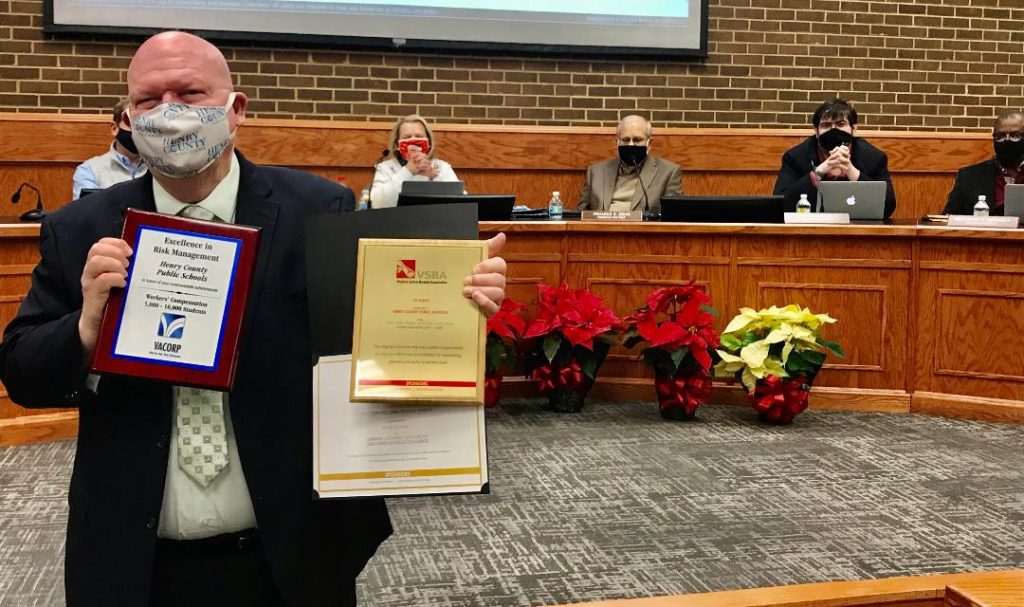
A two percent increase would be an additional $51,000 for the county and a three percent increase would amount to $76,500.
Scott said that building and division-level administrators could expect a one or two percent increase. The impact to the county would be $63,000 for one percent and $125,000 for two percent.
In addition to compensation, capital projects are also set to take a big proportion of the budget.
“From last year, there are three items at the top of that list that have had the most attention recently,” Scott said, listing upgrades to the G.W. Carver Elementary cafeteria, the Pupil Transportation Garage, and ceiling repairs at Bassett High School.
The estimated cost for upgrades at Carver is $1,080,000. The improvements to the garage would cost nearly $500,000 and the work at Bassett, $3.2 million.
Other capital projects that will prove costly are renovation and additions to Sanville Elementary School ($6.5 million), as well as roof and HVAC replacements for Laurel Park Middle School ($5 million).
“We know the value of those things, but we also know they probably are not going to be possible within the next year or two years,” Scott said. “They are not back burners (projects) but they are a little farther off.”
In terms of new costs, Scott expects changes in Standards of Quality Staffing Guidelines from the state.
“There is some legislation out there that would increase the number of school counselors, librarians, nurses, assistant principals and so forth,” he said. “That would have a cost impact on us but right now we don’t know what that estimate would be.”
Additional new costs are an increase in school resource officers by three ($190,000), staffing and site preparation for a Career Academy Nursing Program ($184,000), hiring a new Student Information System manager ($84,000), and a new custodial services contract ($1.5-1.8 million)
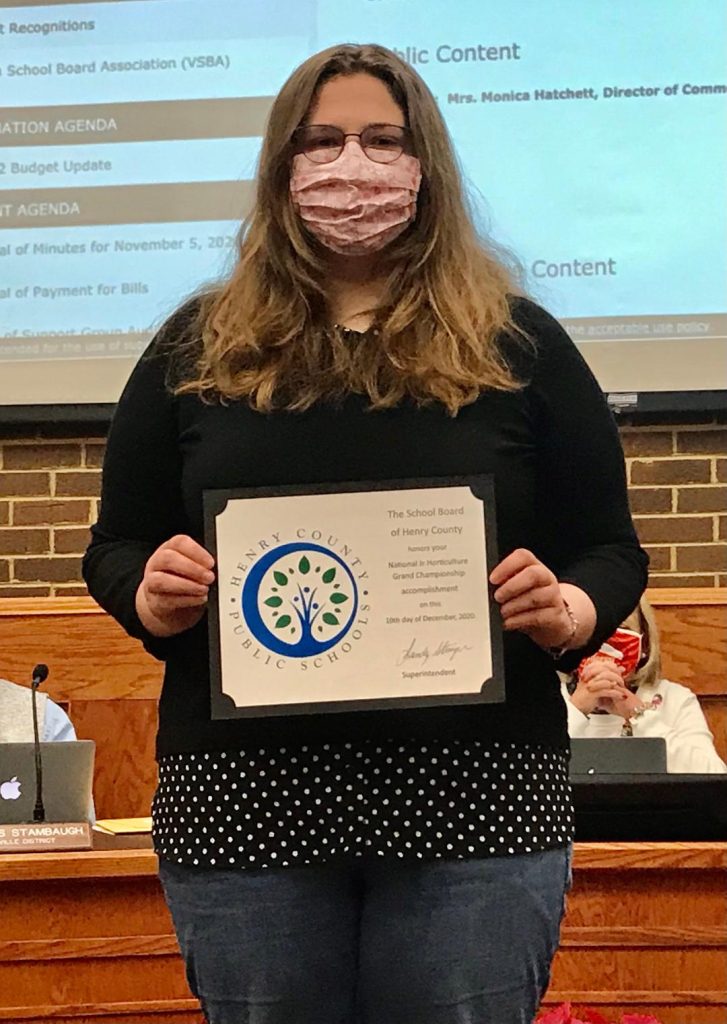
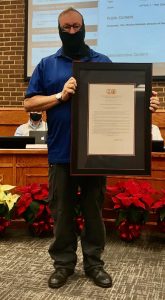
In other matters presented, the school board:
*Recognized Samantha Law, a student at Bassett High School, for placing first in a virtual floral design competition through the National Junior Horticulture Association.
*Recognized Magna Vista High School’s Junior Reserve Officers’ Training Corps program for receiving a proclamation from the Virginia General Assembly. Major Phil Corbo was in attendance to represent the team.
*Announced two awards given to the board by the Virginia School Board Association. The board was awarded the Excellence in Risk Management Award and Gold Certification for the Green Schools Challenge with first place honors.
*Waived the normal audit fee for Support Groups (boosters and parent teacher organizations) in fiscal year 2020 due to the inability to fundraise because of the pandemic. The normal audit fee is $500 per group. Strayer also announced an intent to continue to waive the fee in subsequent years. This saves the groups a total of $10,700 per year.
*Appointed Leslie Ramey as clerk of the board and Monica Hatchett as deputy clerk.




